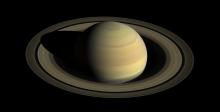Listen to today's episode of StarDate on the web the same day it airs in high-quality streaming audio without any extra ads or announcements. Choose a $8 one-month pass, or listen every day for a year for just $30.
You are here
Groundhog Day
Seasons come and seasons go. Sometimes, though, it can be hard to tell when one comes and another goes. That confusion is the idea behind Groundhog Day. The legend of the day says that if a groundhog sees its shadow, there will be six more weeks of winter. If not, then spring is just around the corner.
Groundhog Day itself is a cross-quarter day. It occurs about halfway between the winter solstice, in December, and the spring equinox, in March.
In many cultures, the cross-quarter days marked the changing of the seasons, not their mid-points. In such cultures, today would be the start of spring.
In modern times, we usually mark the changing of the seasons using the Sun’s motion across the sky. In particular, we use the solstices and equinoxes. At the solstices, the Sun is farthest north or south in the sky. And at the equinoxes, it’s between those extremes — it stands directly above the equator at noon. This system provides calendar dates that are precise and predictable.
Yet we also use other systems to mark the changing seasons. Meteorology, for example, sets the seasons by the annual temperature cycle, so spring begins on March 1. And families measure the seasons by the school calendar.
In practice, of course, those systems all blur together — the seasons come and go as they will, regardless of how we mark them. So no matter how you think of the date, enjoy your Groundhog Day — a marker of the changing seasons.
Script by Damond Benningfield





